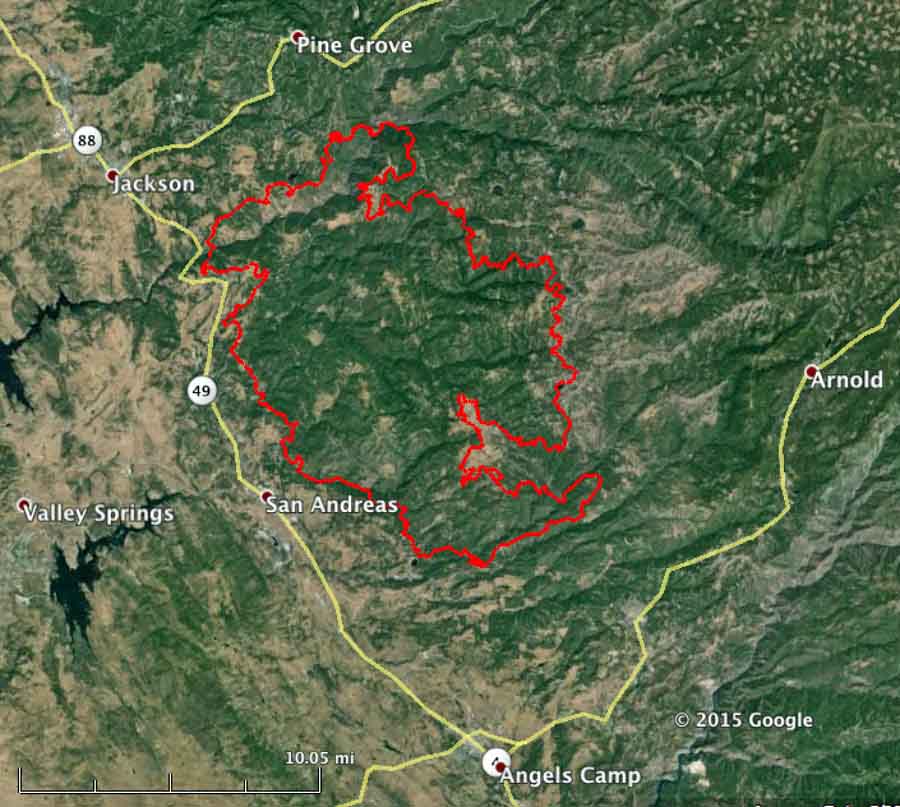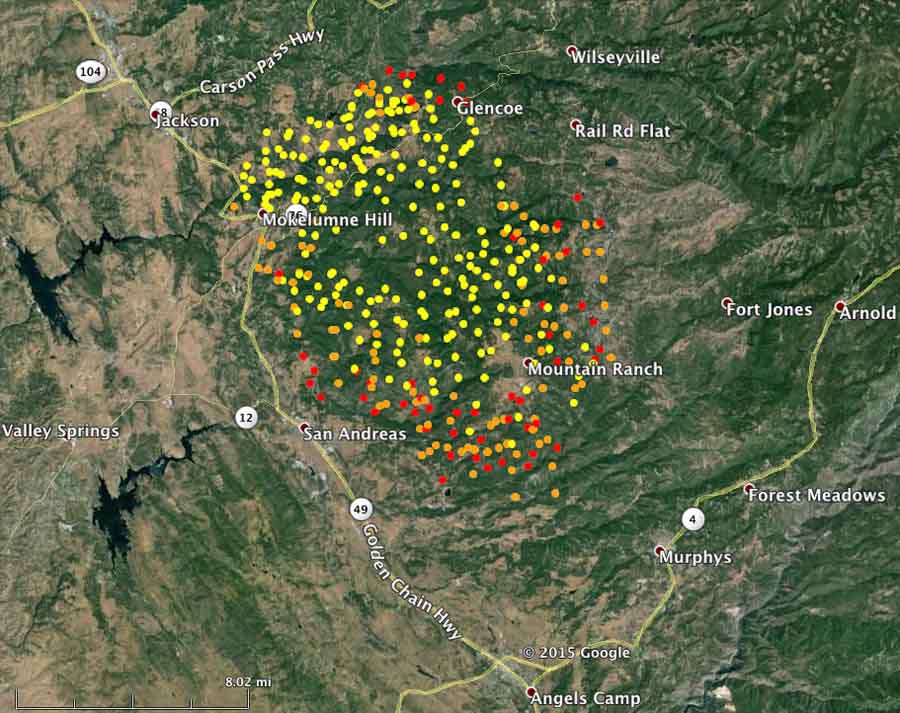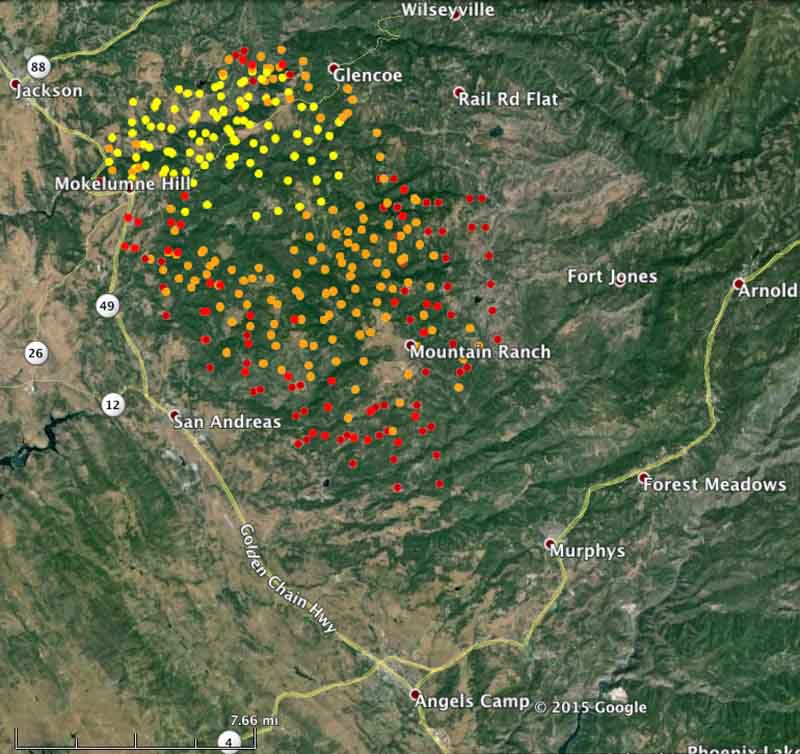A September 16 update on the Butte Fire is in a new article.
****
(UPDATED at 12:17 PT, September 14, 2015)
The Butte Fire south of Jackson, California has grown by about 6,000 acres in the last two days and is now listed at 71,063 acres.
CAL FIRE reports that 135 residences and 79 outbuildings have been destroyed.
Fire behavior remained moderate on Sunday allowing crews to be more effective in constructing fireline on the perimeter.

Evacuations are still in place for many areas in Amador and Calaveras Counties. More details are available at the fire information phone lines: (530) 647-5218 and (209) 754-5527.
****
(UPDATE at 10:35 p.m. PT, September 12, 2015)
In a 9:15 p.m PT update from CAL FIRE, the size of the Butte Fire south of Jackson, California remained about the same during the day on Saturday, but damage assessment teams reported that they counted 86 homes and 51 outbuildings that burned in the fire.
Mandatory evacuations are still in place for numerous locations in Amador and Calaveras Counties. More details are available at the fire information phone lines: (530) 647-5218 and (209) 754-5527.
Over 3,800 personnel are assigned to the fire, along with 452 fire engines, 77 hand crews, 17 helicopters, and 94 dozers.
****
(UPDATED at 9:43 a.m. PT, September 12, 2015)

Two close calls have occurred on the Butte Fire south of Jackson, California. A truck from the West Point Fire Protection District burned in the private driveway of a home along Highway 26 . The person who took the photo above said it appeared the crew was doing structure protection and that they were able to avoid any major injuries.
The Modesto Bee has an article about “Modesto and Stanislaus Consolidated crews” that had to take refuge behind a structure as the fire “made a significant run at them [with] very erratic fire behavior”. The firefighters did not deploy fire shelters, but their vehicles suffered heat damage described as “cosmetic”, including “bubbled paint, melted plastic trim and melted hose”.

CAL FIRE reports that the Butte Fire has burned 64,728 acres and has destroyed 15 structures. Other than evacuations and the number of firefighting resources assigned (3,330 personnel) CAL FIRE has provided little additional information about the fire. Saturday morning they did supply the map below which, although undated, appears to be fairly current.

****
(UPDATED at 5:30 p.m. PT, September 11, 2015)

CAL FIRE reported at 3 p.m. today that the Butte Fire south of Jackson has burned 50,000 acres since it started 46 hours before on September 9.
More areas have been added to the mandatory evacuation list in Calaveras and Amador Counties. Details are available at the Fire Information phone line, (530) 647-5218 and (209) 754-5527.

Continue reading “CAL FIRE reports 135 residences burned in the Butte Fire”




